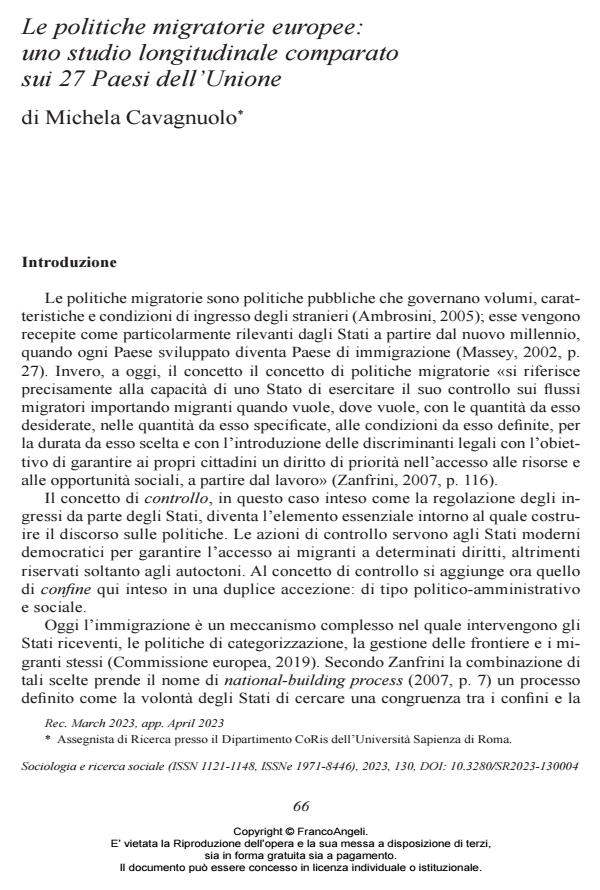European migration policies: a comparative longitudinal study of the 27 EU countries
Journal title SOCIOLOGIA E RICERCA SOCIALE
Author/s Michela Cavagnuolo
Publishing Year 2023 Issue 2023/130
Language Italian Pages 23 P. 66-88 File size 263 KB
DOI 10.3280/SR2023-130004
DOI is like a bar code for intellectual property: to have more infomation
click here
Below, you can see the article first page
If you want to buy this article in PDF format, you can do it, following the instructions to buy download credits

FrancoAngeli is member of Publishers International Linking Association, Inc (PILA), a not-for-profit association which run the CrossRef service enabling links to and from online scholarly content.
The study addresses the issue of EU States’ migration policies, with a par- ticular focus on the factors contributing to their design. The analysis was carried out with the standard method of associations: hypotheses were obtained through a deductive procedure and submitted to corroboration through the construction of multiple linear regression models that compare three time points. Among the results obtained, it is worth mentioning the insignificant effect on the type of migration policies exercised by the socio-demographic factors closely related to migration flows. Instead, the degree of openness of States to immigration is influenced by cultural, economic and social factors.
Michela Cavagnuolo, Le politiche migratorie europee: uno studio longitudinale comparato sui 27 Paesi dell’Unione in "SOCIOLOGIA E RICERCA SOCIALE " 130/2023, pp 66-88, DOI: 10.3280/SR2023-130004